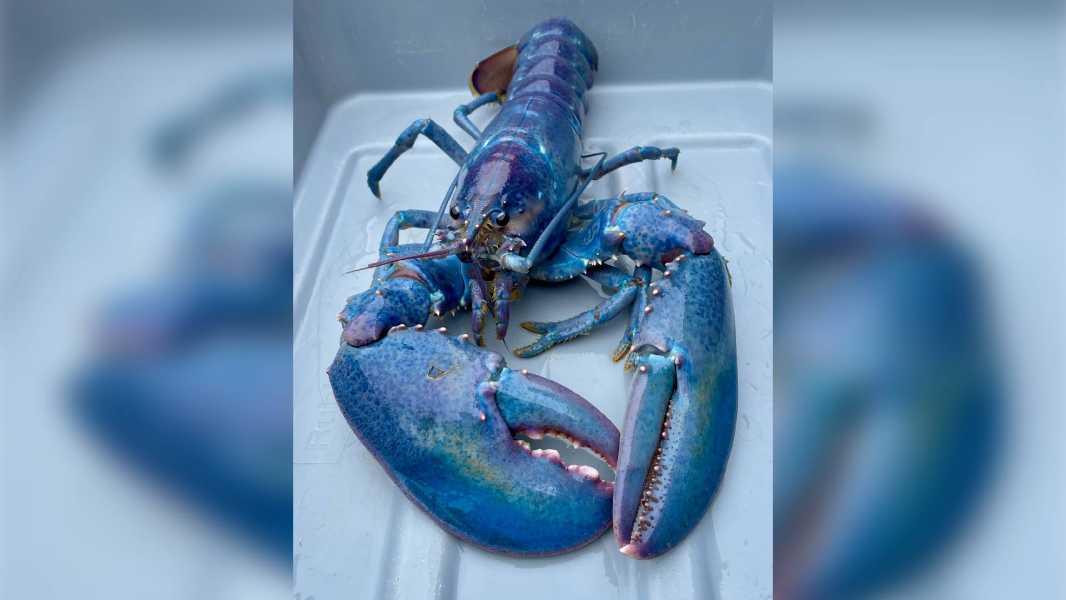
“Cotton Candy” is a lobster caught off the coast of New Hampshire that now lives at the Coastal Science Center. (Photo courtesy of Coastal Science Center, Rye, NH)
In late July, a lobster fisherman caught a cotton candy lobster off the coast of New Hampshire, an extremely rare occurrence—one in a hundred million. The lobster has vibrant pink, purple, and blue hues.
Joseph Crum, the 25-year-old man who caught the rare specimen, donated it to the Coastal Science Center in Rye, New Hampshire, where the lobster, described as “healthy and wholesome,” is now on display, Karen Provazza, a researcher at the center, told Live Science in an email.
Common lobsters are mottled brown, which helps them hide on the ocean floor. However, they also come in a variety of colors, including orange, blue, and even bicolor. These variations are due to genetic mutations that affect the chemistry of the pigment they absorb.
All lobsters get a red pigment called astaxanthin from the plants and smaller crustaceans in their diet. This pigment gives lobsters their bright red color when cooked, as well as their natural mottled brown appearance.
The outer covering of the lobster consists of several layers: first the skin, then two layers of shell. After it is consumed, the red pigment accumulates in the skin layer. The pigment then moves to the bottom layer, which appears blue due to interactions with proteins present in the shell, which twist the pigment. Finally, when the pigment gets to the top layer, it interacts with various proteins, creating a yellow hue.
So when we look at a lobster, we actually see each of these layers—yellow, blue, and red—which is what gives it its mottled brown appearance. Cooking the lobster destroys these proteins, returning the astaxanthin to its characteristic red color.
Variations in lobster coloration are caused by genetic mutations that change the way this pigment interacts with proteins in the shell. Blue lobsters carry a mutation that increases the amount of proteins in the bottom layer of the shell, which pulls more red pigment out of the skin and into the shell. This mutation occurs in about one in two million lobsters.
Cotton candy lobsters are even rarer, with a frequency of about 1 in 100 million. The exact genetic causes of their coloration are unknown, but it is thought that something disrupts the normal pigmentation process, allowing more of the red astaxanthin to show through the blue layer. The result is “a mix of pink and purple on a blue background, reminiscent of cotton candy,” Provazza explained.
The color of a lobster can also be affected by its diet. The intensity of the color shades in lobsters with mutations that predispose them to certain color variations will depend on their diet. For example, if a lobster is fed primarily bait, it will receive less astaxanthin compared to a normal diet of crabs and shrimp, which are rich in astaxanthin.
So why are these lobster color variations so rare? For one thing, the mutations that drive these changes occur at a very slow rate. Additionally, brightly colored lobsters are less able to hide on the ocean floor, making them more vulnerable to predators, thereby reducing their chances of surviving long enough to pass on their genes.
Cotton Candy Lobster, estimated to be 8-10 years old, will spend the rest of his days at Seacoast Center in New Hampshire, safe from predators and New England's summer lobster casseroles.
Sourse: www.livescience.com





